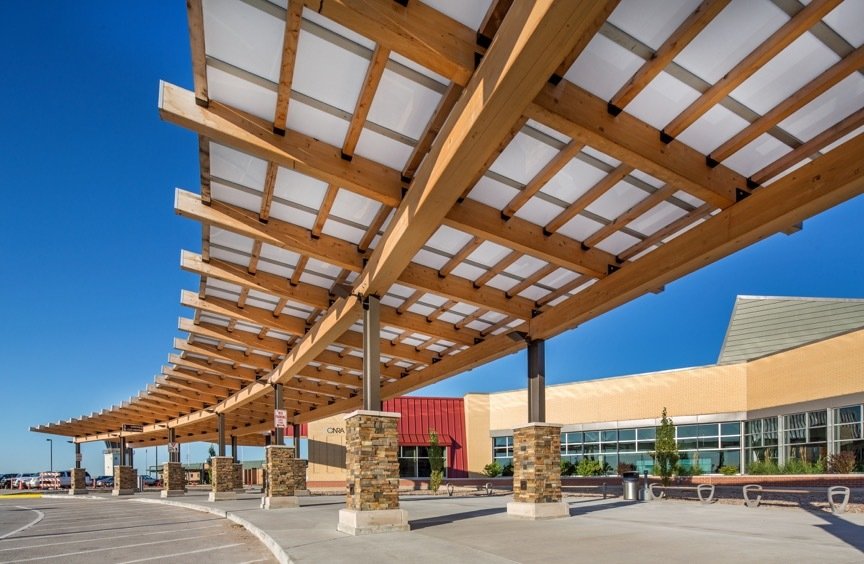Flowing 310 miles across the state of Nebraska, the Platte River guided gold seekers, homesteaders, trappers and traders toward destinations west in the 1800s. Muddy, shallow and non-navigable, yet its banks marked the trail to adventure for many pioneers.
Today, the river is set in stone in a terrazzo-tiled path that guides travelers to even more far-flung destinations. Winding through a new 34,000 square-foot, $14 million facility, the multi-hued terrazzo river trail leads departing and arriving passengers to their internal destinations.
Welcome to the new Central Nebraska Regional Airport – a dramatic departure from the previous 60-year-old, 10,000-square-foot building. The current CNRA, opened this Spring, was designed by the architectural firm of Mead & Hunt in Minneapolis.
A critical element of that design is a sweeping, curving, translucent canopy engineered by Duo-Gard. Integrating ¼” solid white polycarbonate panels in low-profile, clear anodized framing, Duo-Gard’s Sleekline Monolithic Canopy System at CNRA is 220 feet long by 35 feet wide. “The elliptical shape surrounds the entry experience,” says Mead & Hunt’s Matt Dubbe, AIA LEED AP and Market Leader, Architecture. “At night, the gentle curve provides a welcoming glow.”
This is Dubbe’s second canopy designed with Sleekline. Last year, the Eastern Iowa Airport outside Cedar Rapids underwent major renovation including the addition of a Sleekline canopy. “That project gave us a high level of confidence,” says Dubbe. “We knew we could meet our performance criteria with confidence that the material will stand the test of time.”
Dubbe says CNRA had three options for the entry: No canopy, a canopy only at the vestibules, a whole canopy encompassing the entire entrance. The budget was tight. However, he says once the administration saw each option, they understood that from the passenger experience standpoint, the whole canopy was best.
“The canopy is a strong design element, one of the focal points,” says Dubbe, adding that the “arrival experience” at an airport, especially at the regional level, is critical in reducing stress and enticing repeat customers.
A major challenge of the project was the architect’s requirement for continuous 35-foot panels. Typical standard maximum length for Sleekline is 24 feet without mullions. Duo-Gard solved this by custom-cutting each panel to size from coil stock.
“A major advantage of Sleekline is its exceptional, cost-effective design flexibility,” says Blake Pavelich, Duo-Gard’s national sales manager. “It combines lightweight, shatter-resistant protection with diffused light transmission that easily lends itself to unique architectural aesthetics, including illumination effects.”
Located near the city of Grand Island, right in the center of the state, the new airport will expand its position as a community gathering place, Dubbe says, accommodating a wide variety of events. Incorporated in 1872, Grand Island is now the state’s fourth largest city at 50,000 residents and serves a rural area with 200,000. The new airport reflects the city’s dramatic growth with boardings that have gone from 7,500 in 2005 to a projected 70,000 in 2016.
The airport’s design also reflects the architect’s commitment to sustainability, featuring geothermal heating and cooling, heated flooring and sawtooth ceilings angled to harvest natural light. In fact, every room receives the benefits of natural light, Dubbe points out. Solar panels are planned for the roof to reduce energy use further.
And the community’s reaction? “People see it as crisp and contemporary, not overly nostalgic and not aggressively modern. It transcends all of this,” Dubbe says. “It’s been wonderfully well-received.”



